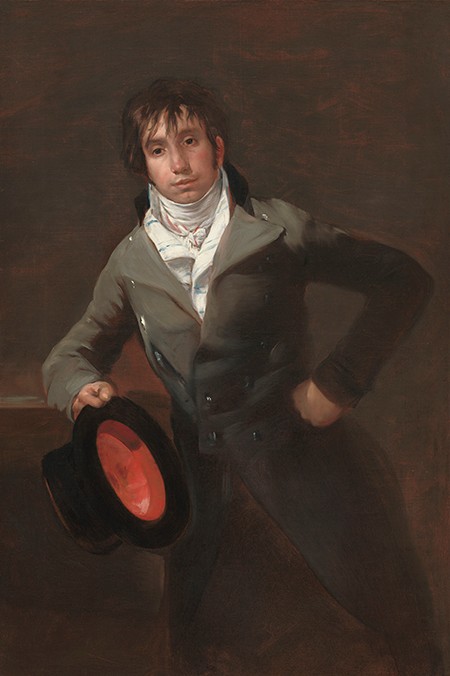On the cover of a 2010 issue of The Journal of the Masonic Society is a reproduction of The Injured Mason (1786–1787), a painting by Francisco de Goya y Lucientes (1746–1828). Details of Goya’s early travels, of his extended correspondence with a close friend, and of his art in all media provide compelling evidence that he himself moved within Masonic circles and may have been a Mason. My working theory is that these associations contributed to aspects of Goya’s art that have long been viewed as strikingly modern and singularly powerful.
The greatest challenge in conducting research on Freemasonry in eighteenth-and early nineteenth-century Spain stems from the fact that the order was prohibited, in accordance with a papal bull, for much of this period. Therefore, the usual records, such as lists of lodge members, are often lacking. In the case of Goya, other kinds of evidence—traces of Masonic social networks and a highly developed symbolic visual language—offer clues to his likely identity as a Mason.
When Goya traveled to Italy in the early 1770s to study art, he filled a sketchbook with drawings and notations, including the name of a Mason, Louis Tarteiron—a Protestant businessman and an important member of the Masonic community in Marseille. As a fellow at the Center for Advanced Study in the Visual Arts I discovered important details of Tarteiron’s identity through the research I conducted at the library of the Scottish Rite Temple (or House of the Temple) in Washington, where I consulted a pioneering history of Freemasonry in eighteenth-century Marseille that few libraries in the world possess, as well as other, similar sources.
A different kind of evidence pointing to Goya’s involvement with Freemasonry is contained in letters he wrote during the 1770s, 1780s, and 1790s from Madrid to his hometown friend, Martín Zapater, in Zaragoza. Several letters include drawings, often combined with words as parts of sentences. These pictographs have puzzled scholars, who have called them “mysterious” and “not very easy” to comprehend. However, these images—for instance, of a thumb on a nose, or of an eye, an ear, and a mouth lined up horizontally within a sentence—have striking parallels in Masonic hand gestures and visual symbols present on a diverse range of objects and printed materials of the period. Such gestures and symbols also are described in late eighteenth-and early nineteenth-century Masonic handbooks, as I discovered in consulting examples at the House of the Temple library. Through this research, I have enriched my awareness of the visual symbols of eighteenth-century Freemasonry that would have been meaningful to Goya and to some of his friends and patrons.
The visual symbolic language of Freemasonry evident in Goya’s letters also can be seen in his art. Several portraits contain gestures indicating a Masonic identity. A striking example is Goya’s depiction of the artist and industrialist Bartolomé Sureda y Miserol (c. 1803/1804). Sureda traveled to England in the mid-1790s and to France in the early 1800s. Like Goya (and other Spaniards), Sureda may well have become involved in Freemasonry while outside Spain. In Goya’s sensitive portrait, Sureda grips his hat awkwardly and unnaturally, thumb and index finger coming together to form a circle on the underside of the hat’s rim. The circular configuration of the hand, in combination with the right-angle formations of both arms, literally embodies the Masonic compasses and square. (In a later portrait by another artist, Agustí Buades i Frau [1804–1871], Sureda actually holds a compass.) At CASVA, my study benefited from consulting the curatorial files on Goya’s painting and other related portraits as well as reviewing publications on the artist in the superb National Gallery of Art Library (where I found virtually any book on Goya that I wanted to read).
My research at CASVA yielded important evidence to support my theory that Goya operated within a Masonic network that was meaningful to him personally, professionally, and artistically. His apparent identity as a Mason deepens our understanding of his sophisticated use of hand gestures, his creation of albums of drawings that are “private,” or secret, and his masterful ability to hold reason and emotion in a dynamic visual balance. In her important study, Living the Enlightenment, the historian Margaret C. Jacob described late eighteenth-century Freemasonry as “a microcosm of a new secular and civic, yet quasi-religious, political order we have now come to know simply as the modern world.” In this context, the seemingly “modern” aspects that have been ascribed to Goya’s art since the mid-nineteenth century acquire a new, historically grounded significance.
